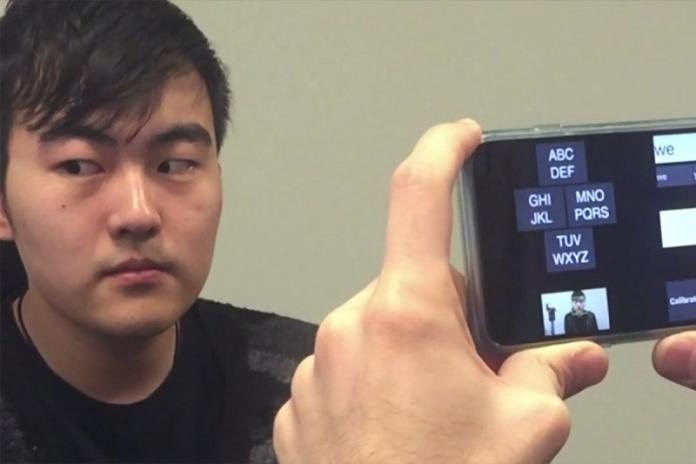Amyotrophic lateral sclerosis (ALS) or Lou Gehrig’s disease is known to most people these days through the viral Ice Bucket Challenge. However, the disease has been affecting people for decades, most notably renowned scientist Stephen Hawking. ALS afflicts the nervous system, attacking cells and neurons in the brain and spinal cord. In many instances, the disease claims all motor skills, rendering a patient motionless apart from eye movement. Technology to help ALS sufferers speak exists. Famously, Hawking uses a machine that presents his words in a robotic voice-like tone. However, while Hawking’s appearances on TV make it seem like he is speaking in the moment, all his speech is planned. The technology he uses takes a long time to function as it seems. Microsoft’s GazeSpeak aims to make speech faster. The app runs on a device and predicts what the patient wants to say by registering eye movement. An alphabet is presented in a grid structure, with four grids visible through a sticker on the back of the device. The app can read eye movements for up, down, left, and right.
GazeSpeak Accuracy
Of course, accuracy is hugely important. By reading the eye movement, the app can register which grid the person is looking at and predict the letter. Through artificial intelligence and predictive texting, the app creates four options. It then selects the most likely and reads it aloud. Xiaoyi Zhang, who developed GazeSpeak whilst he was an intern at Microsoft Research, explains how this works: “For example, to say the word ‘task’ they first look down to select the group containing ‘t’, then up to select the group containing ‘a’, and so on,” Against a traditional method of an ALS sufferer looking at a letter written on a board, GazeSpeak proved more accurate. It took an average of 78 seconds to complete a sentence. The older method takes on average 123 seconds. Microsoft says the app will arrive this May and will be free to use.




